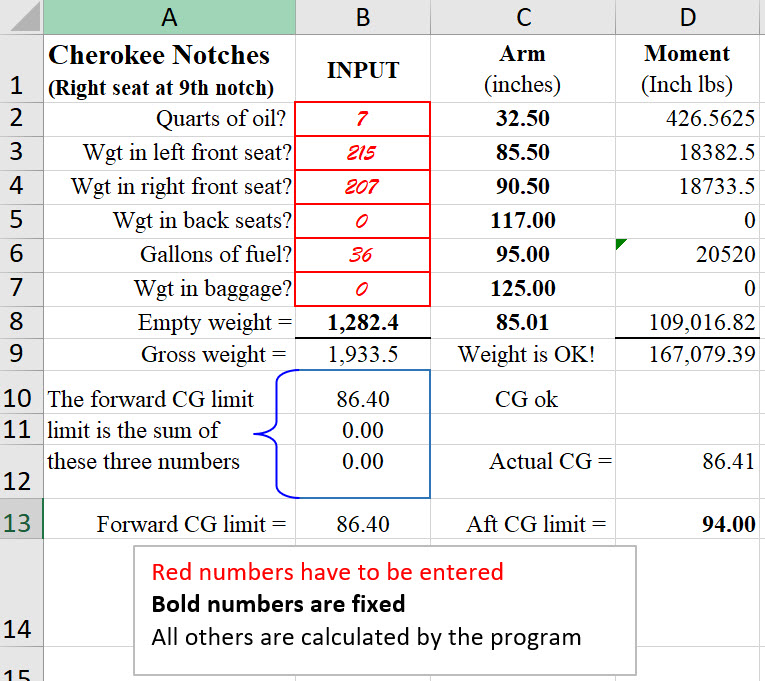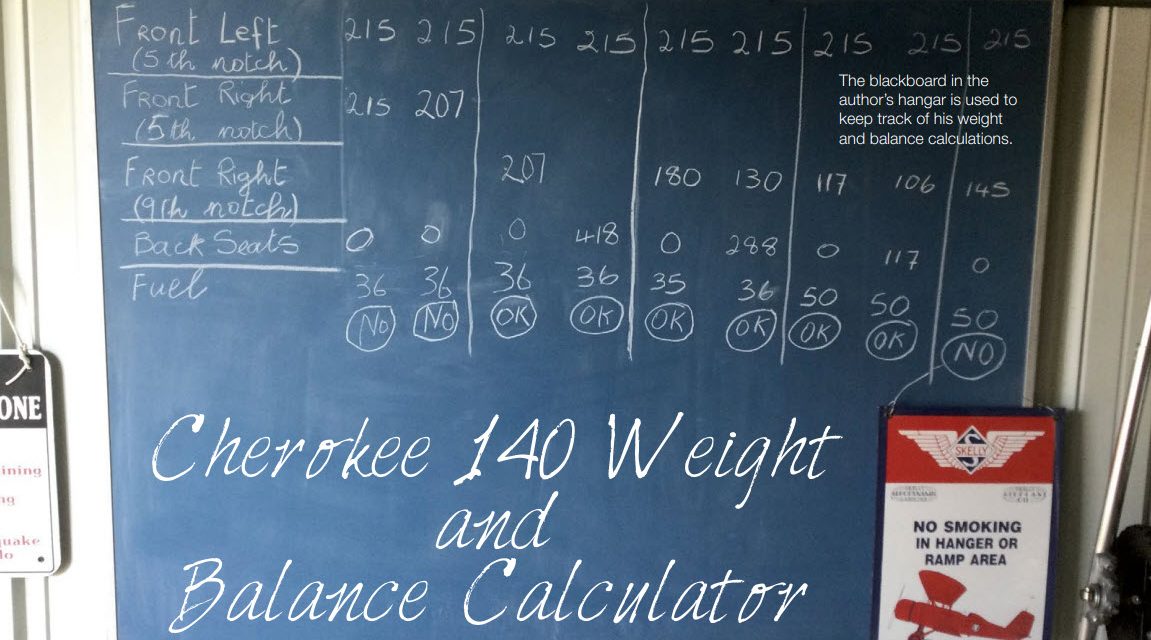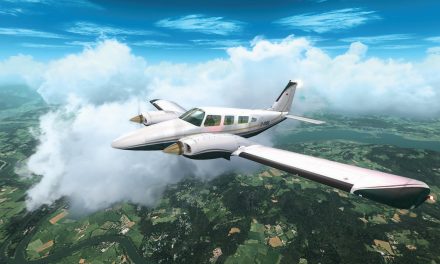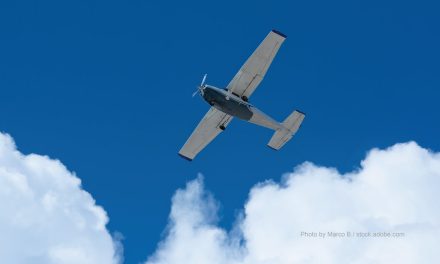How Your Seat Notches Can Allow for More Fuel
By Seán G. Dwyer
“Granddad, what is this?” asked my grandson, holding up a card he found in a box of memorabilia. “Something I hope you will never need,” I replied, looking at my Selective Service draft card.
I noticed that I was 60 pounds lighter and 5 inches taller half a century ago. It does not seem that long. If you were rude enough to imply that I am overweight, I would explain that my genetic height is five inches taller than my current height, something body/mass tables never take into account.
But that is not the subject of this article. The weight and balance of my Piper is, and I want to show you that you can use the seat notches to justify a few extra gallons of gas in a PA-28-140.
With four seats and a 50-gallon fuel capacity, it is easy to load a Cherokee 140 forward of the center of gravity (CG) limit. If you have too much weight in front, sometimes you can simply tell the person in the right seat to move it back to the ninth notch.
“Cherokee Notches” is an Excel spreadsheet (which also works on an iPad or iPhone using the Numbers application). Rather than combine weights in the two front seats in the W&B calculation, it assumes that the left front seat is in the mid position (fifth notch) and the right front seat is at the aftmost notch (ninth notch). The blackboard in the author’s hangar is used to keep track of his weight and balance calculations.
Special Airworthiness Information Bulletin (SAIB) No. ACE-97-02 provided the locations aft of datum for each notch in the seat rail. Whereas the nominal front seat location is at 85.5 inches aft of datum, it varies from 80.5 inches at the most forward position to 90.5 inches at the most aft.

The arm moves aft 1.25 inches for each of the nine notches. When the front seats are occupied by people who each weigh over 210 pounds, that ninth notch becomes very useful.
The program is quite simple. One enters the data for the flight into the six red boxes (B2 through B7), and the program spits out either “Weight is OK!” or “Over Max Weight” in Cell C9. Where balance is concerned, Cell C10 will say either “CG is OK” or “Unsafe CG”.
Using the Calculator

Formulas in the different cells from the picture at right are shown below. Type into cells in Column A as shown at right. B8 is the empty weight for my N4500R, so insert the weight for your own PA-28-140 here.
Cell B9 provides gross weight by converting quarts and gallons to pounds and summing the weights in Cells B2 through B8 (i.e. B9 = 1.875*B2 + B3 + B4 + B5 + 6*B6 + B7 + B8).
Because the forward CG limit (B13) changes with gross weight in three steps, it is calculated by adding the three possible solutions B10 through 12. Two of the cells will always equal zero.
B10 =IF(B9>1850,(85.01+0.01666*(B9-1850)),0)
B11=IF(AND(B9>1650,B9<1851),84+0.00505*(B9-1650),0)
B12 =IF(B9<1651,84,0)
B13 =SUM(B10:B12)
Cell C9 communicates the status of total weight in English:
C9 =IF(B9<2150.5,” Weight is OK!”,”Over Max Wgt!”)
Cell C10 does likewise for Balance.
C10 = IF(AND(D9/B9>B13,D9/B9<D13),”CG ok”,”UnsafeCG”)
Moments in Column D are calculated by multiplying Column B (weights) by Column C (arms), while converting quarts and gallons to pounds in cells D2 and D6. The Total Moment is calculated in D9.
D2 =1.875*B2*C2
D3 =B3*C3
D4 =B4*C4
D5 =B5*C5
D6 = 6*B6*C6
D7 =B7*C7
D8 =B8*C8
D9=SUM(D2:D8)
D12= D9/B9
Cell D13 has the Aft CG limit, which is always 94.0.
Practical Application
In order to maintain flexibility for the next flight, I never fill the tanks higher than 36 gallons after a flight. It is easy to add more gas later. Removing gas is a different story.
The blackboard shown at the start of this article is in my hangar, and I add to it whenever I assess a weight configuration that I want to remember.
As a starting point, I always assume that my 215 pounds will be in the front left seat, and that it is at the fifth notch. If the person in the right seat weighs 207 pounds, and that seat is at the fifth notch, then 36 gallons would put the plane outside the CG range, but it would be OK at the ninth notch.
If there are 50 gallons in the tanks, I could have a person who weighs 106 pounds in the front and another weighing 117 pounds in the back.
An example that might surprise you is that I could have 36 gallons and two passengers with a combined weight of 418 pounds, but they both have to be in the back seats. Comfort be damned, just follow the math. That was a case when filling the tanks to 36 gallons after the previous flight was too much.
We’ve All Been There …
I suspect that every pilot has exceeded the weight balance limit at some time, either by accident or through ignorance. If they survived, they are likely to be more careful in the future. One personal experience occurred when I flew my 10- and 11-year-old daughters to a grass airfield (Tobacco City, Wisconsin), where they were to stay with friends. The 50 gallons of fuel on takeoff was not a problem. The girls were light, and I was both younger and lighter. When we arrived where I was to drop off the girls, the friends with whom they were to stay were waiting with some neighbors.
“Take them for a ride, Seán,” I was asked. Without thinking, I let three adults join me in the plane — which still had 46 gallons of fuel.
The takeoff roll was not remarkable, given the low-wing Cherokee’s good ground-effect capabilities, but I knew we were in trouble as soon as we were in the air. The plane did not want to climb, and I was not going to pull the nose up until I had 72 mph.
“Will I go under the wires or over?” went through my mind as we approached the edge of the field. We went over, but not by much. I eased the plane around in a gentle turn and came down ASAP. I am sure they thought I was very mean. I did not tell them they were lucky to be alive.
On another occasion, I was sitting at a table in the airport restaurant at Janesville, Wisconsin, when somebody came in and announced that the emergency locator transmitter (ELT) of a certain Cherokee was activated. It was not my N4500R, I am quick to add. From the conversation, I surmised that four fullsized, relatively corpulent men had arrived in a PA-28-140, and it was clear that their touchdown had been somewhere between definitive and violent. Turns out one of the men was closer to 300 pounds than a reported 200.
Nevertheless, they got back on board and departed. I wondered how much fuel they had on board, and whether they knew how close they were to becoming a statistic. Triggering the ELT should have sent a message. The Cherokee 140 is a fine plane, but its limitations must be acknowledged.
The Cherokee 140 Weight and Balance Calculator can be downloaded only by paid members who are logged in.Have a website login already? Log in and start reading now.
Never created a website login before? Find your Customer Number (it’s on your mailing label) and register here.
Still have questions? Contact us here.
Seán G. Dwyer has been a pilot for 44 years and has owned a PA-28- 140 for 34 years. A career in industry started with a Ph. D in Chemistry. As author of the book “STEM For All Ages,” he endeavors to make science interesting to teenagers and anybody who will listen.






